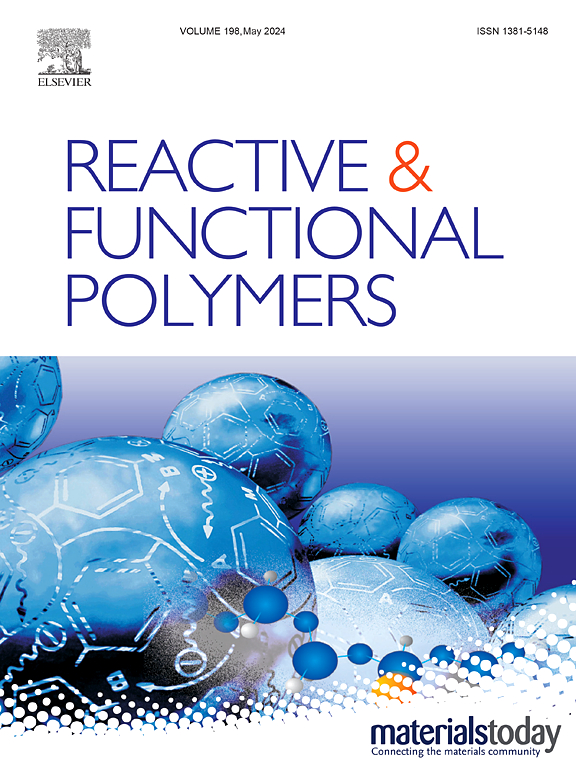The hidden power of a novel collagen octapeptide: Unveiling its antioxidant and cofactors releasing capacity from polyurethane based systems
IF 4.5
3区 工程技术
Q1 CHEMISTRY, APPLIED
引用次数: 0
Abstract
Aromatic antioxidant peptides are attractive biomolecules that can be used to design supramolecular structures useful in various biomedical applications. Collagen-derived peptides proved to be suitable for a wide range of biological applications. Herein, we introduced a novel amphipathic octapeptide as an essential component in hybrid peptide-polyurethane materials. The octapeptide was synthesized by SPPS, followed by mass confirmation using MALDI-ToF mass spectrometry and characterized by nuclear magnetic resonance and fluorescence spectroscopy. The peptide antioxidant capacity was demonstrated through FRAP and DPPH assays. Our data indicate that the presence of peptide slightly slows down the polyurethane ability to form hydrogels at salt concentration higher than 150 mM. Moreover, the gel formed in the presence of octapeptide can release FAD much faster than NADPH. Preferential weak interactions between peptide and polyurethane structures increase FAD releasing capacity. Our findings will pave the way for the development of new biocompatible materials containing an antioxidant peptide and FAD, a cofactor that modulates the antioxidant function of multiple enzymes simultaneously. These controlled-release platforms created by simple mixing may be suitable for injectable formulation.

求助全文
约1分钟内获得全文
求助全文
来源期刊

Reactive & Functional Polymers
工程技术-高分子科学
CiteScore
8.90
自引率
5.90%
发文量
259
审稿时长
27 days
期刊介绍:
Reactive & Functional Polymers provides a forum to disseminate original ideas, concepts and developments in the science and technology of polymers with functional groups, which impart specific chemical reactivity or physical, chemical, structural, biological, and pharmacological functionality. The scope covers organic polymers, acting for instance as reagents, catalysts, templates, ion-exchangers, selective sorbents, chelating or antimicrobial agents, drug carriers, sensors, membranes, and hydrogels. This also includes reactive cross-linkable prepolymers and high-performance thermosetting polymers, natural or degradable polymers, conducting polymers, and porous polymers.
Original research articles must contain thorough molecular and material characterization data on synthesis of the above polymers in combination with their applications. Applications include but are not limited to catalysis, water or effluent treatment, separations and recovery, electronics and information storage, energy conversion, encapsulation, or adhesion.
 求助内容:
求助内容: 应助结果提醒方式:
应助结果提醒方式:


